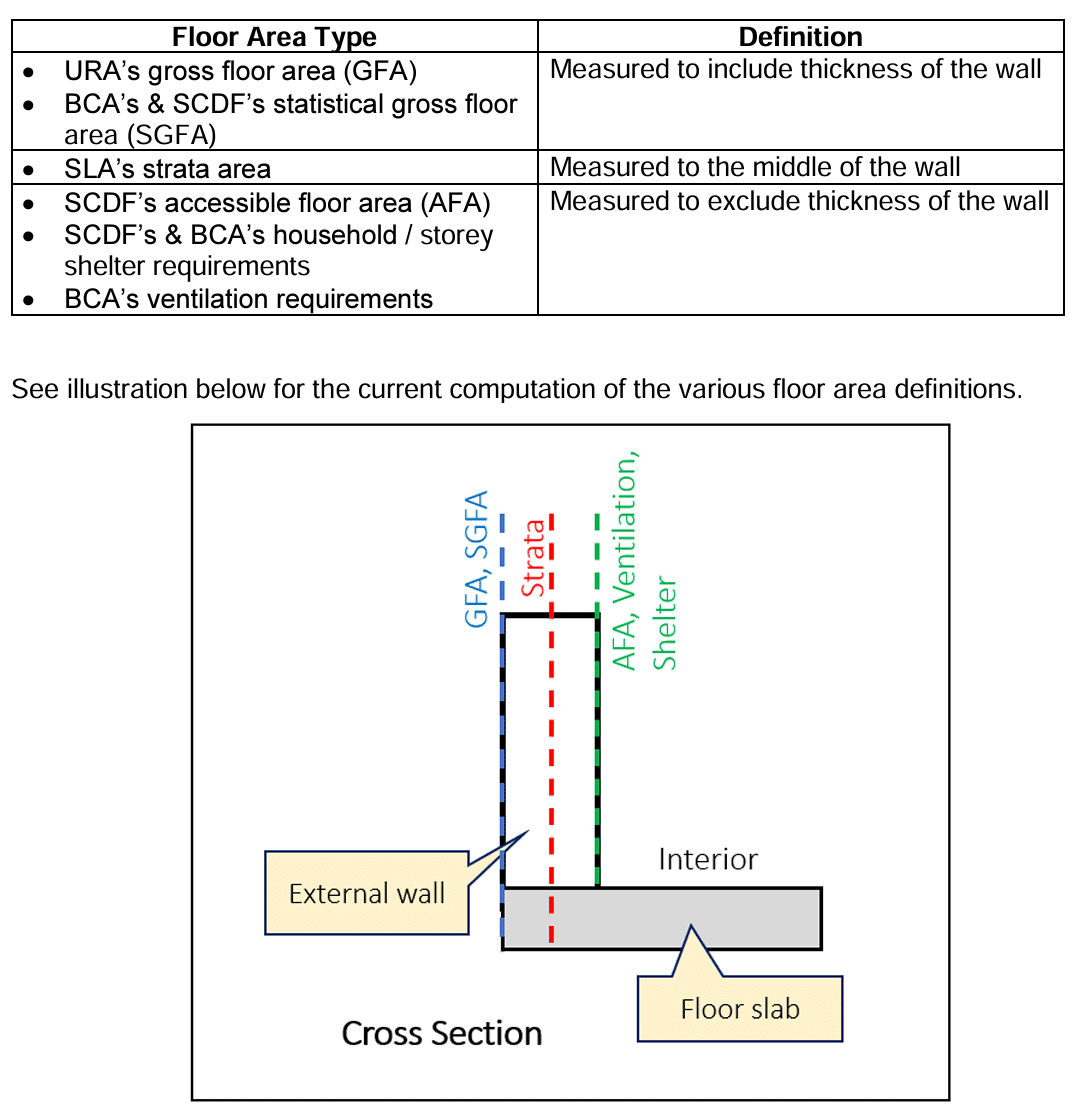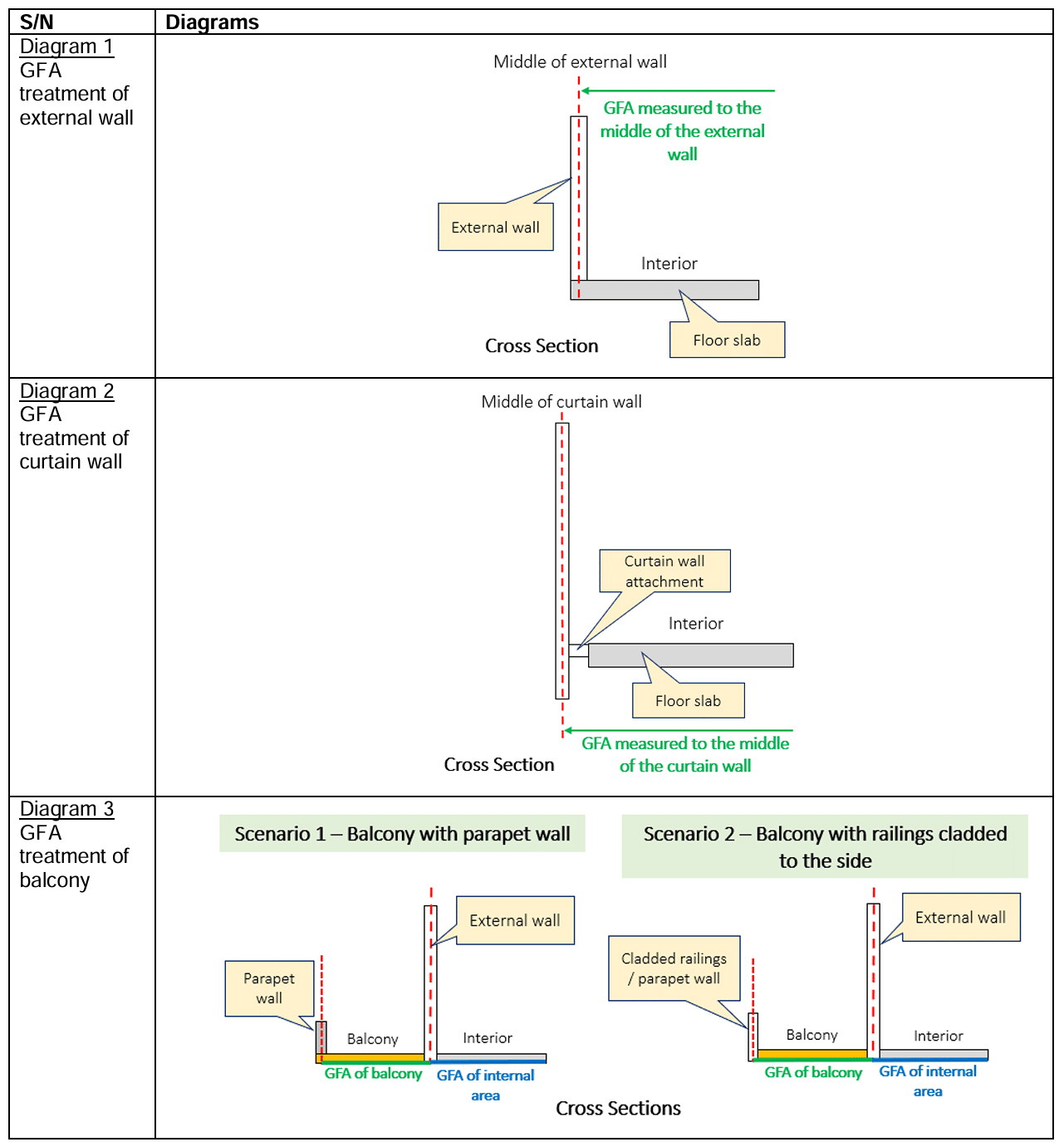You may have heard about Gross Floor Area (GFA) harmonization in Singapore for some time, especially after the launch of Lentor Modern, the first condo project impacted by these new rules. Since then, more projects have followed suit under the harmonized regulations. While this term has been circulating in property news and discussions, some home buyers may still be unclear on what GFA harmonization means and how it affects the property market.
This article explains GFA harmonization in simple terms, breaking down what it is, why it was introduced, and, most importantly, how it impacts you as a home buyer. We will also explore how these new regulations have affected the market so far, including the rise in prices and changes in property design. Whether you plan to buy a new home or invest in property, understanding GFA harmonization is crucial for making an informed decision.
What Is GFA Harmonization?
The Basics of GFA
Gross Floor Area (GFA) is a key measurement used in the property industry to determine the total usable space in a building. It includes all covered areas, such as rooms, corridors, and outdoor spaces like balconies. GFA plays a major role in calculating a property’s price per square foot (PSF), influencing both the cost for developers and the final sale price for buyers.
Before GFA harmonization, Singapore’s various government agencies—such as the Urban Redevelopment Authority (URA), Building and Construction Authority (BCA), Singapore Land Authority (SLA), and the Singapore Civil Defence Force (SCDF)—used different methods to calculate floor areas. This lack of standardization led to inefficiencies, as developers had to navigate multiple definitions when designing and submitting projects for approval.
Previous floor area definitions by various agencies and their measurements vis-à-vis the external wall of development before GFA Harmonisation:
The Key Changes with Harmonization
In June 2023, Singapore introduced GFA harmonization to streamline these varied approaches. The new regulations create a uniform standard for calculating GFA across all agencies, making the approval process more transparent. Key changes include:
- Unified Measurement Standard:
- Floor areas are now measured uniformly to the middle of external walls. This provides consistency across all regulatory bodies.
- Inclusion of Strata Areas:
- All strata areas, such as private balconies, roof terraces, and air-conditioner ledges, are now fully counted towards GFA. Previously, developers could exclude or partially exclude these areas.
- Exclusion of Void Spaces:
- Void spaces (e.g., double-volume ceilings) are now excluded from GFA calculations, making them less attractive for developers to include in new designs.
These changes were first seen with Lentor Modern’s launch and have since become the new standard for all developments submitted after June 2023. See the attached PDF for the Supplementary Diagram on URA’s revised GFA definition.
Illustration of URA’s revised GFA definition after GFA Harmonisation. For more illustrations, click here.
How GFA Harmonization Affects Home Buyers
As a home buyer, GFA harmonization directly impacts the properties available to you, both in terms of pricing and design. Below are the key ways these changes will affect your next property purchase.
1. Higher Prices per Square Foot (PSF)
The inclusion of previously excluded areas like air-conditioner ledges and private terraces has increased the overall GFA for new developments. This has a knock-on effect on the price per square foot (PSF). Developers are now counting every square foot, which means they can no longer “hide” certain spaces to keep prices lower.
For example, in the past, developers could exclude air-con ledges from GFA, allowing them to advertise a larger unit at a lower PSF. Now, with those areas included, the advertised size of the unit remains the same, but the PSF has increased. Buyers of new developments should, therefore, expect higher PSF prices than in the past.
What This Means for Buyers:
- Be prepared to pay more per square foot for new properties compared to pre-2023 projects. Developers have fewer ways to reduce the official GFA, which means the costs of construction are passed on to buyers.
- If you’re looking for a good value, you may need to adjust your expectations toward smaller, more efficient units.
2. Smaller, More Efficient Designs
Another consequence of GFA harmonization is that developers are focusing on designing more efficient units. With void spaces excluded and air-con ledges now included in GFA, developers are likely to design smaller, more compact apartments to maintain affordability for buyers while keeping construction costs in check.
High ceilings and expansive terraces, which were once a hallmark of luxury properties, may become less common as developers prioritize maximizing functional, livable space. This shift toward efficiency doesn’t necessarily mean poorer quality—it simply reflects a new approach to making the most of every square foot.
What This Means for Buyers:
- Expect to see smaller, well-designed units that prioritize functionality over grandeur. Developers are focusing on creating compact but highly livable spaces to keep prices competitive.
- If you value unique design features like high ceilings or large terraces, you may have fewer options in new developments, pushing you toward the resale market.
3. Reduced Availability of Premium Features
Premium features like large balconies, private roof terraces, and high-ceilinged units are becoming more expensive for developers to include because they are now fully counted toward GFA. As a result, these features may be offered in fewer units or at a higher price premium.
For buyers looking for homes with these kinds of premium features, it might be worth exploring the resale market, where older properties still offer them at a more affordable rate. Properties built before GFA harmonization may include more generous outdoor spaces and unique architectural elements that are no longer as cost-effective to include in new developments.
What This Means for Buyers:
- Premium features like large balconies and high ceilings will be rarer in new developments, and if they are available, expect to pay a premium for them.
- If these features are important to you, consider looking at resale properties that were built before the GFA changes.
Impact on Resale Prices of Pre-Harmonization Properties
While GFA harmonization mainly affects new developments, it also has important implications for the resale market. Properties built under the old GFA rules, where developers could exclude certain areas, may suddenly become more attractive to buyers seeking spacious units with premium features.
1. Increased Demand for Pre-Harmonization Properties
As new developments trend toward smaller, more compact designs, some buyers will prefer older properties that offer larger units, high ceilings, and spacious outdoor areas. These pre-harmonization properties may include features like large air-con ledges or void spaces that no longer exist in newer developments.
What This Means for Buyers:
- If you’re looking for larger, more unique homes, the resale market might offer better value. Older developments that were built under the old GFA rules are likely to provide more spacious layouts compared to new projects.
- Keep an eye on resale listings as demand for these larger, pre-harmonization units could increase, leading to potential price hikes.
2. Resale Price Appreciation
Given the increasing demand for older, larger properties, we may see a rise in the resale prices of pre-harmonization properties. Homeowners who bought properties with premium features under the old GFA rules might find their homes appreciating in value as these features become rarer in the new market.
What This Means for Buyers:
- If you’re considering buying a resale property, act quickly. As more buyers look to the resale market for larger homes, prices could rise in response to higher demand.
- Properties with unique features that are no longer common in new builds (like high ceilings and large outdoor spaces) could see the most appreciation.
Tips for Home Buyers Navigating the New Market
With these changes in mind, here are some tips to help you make a more informed decision when purchasing your next home in Singapore:
- Compare New vs. Resale: If you’re looking for premium features like larger balconies, high ceilings, or more generous layouts, it may be worth comparing new developments with resale properties. Pre-harmonization properties could offer better value for space.
- Consider Your Priorities: In the post-harmonization market, you may need to prioritize what’s most important—whether it’s having a larger, more luxurious space or buying a brand-new, efficiently designed unit.
- Budget for Higher PSF Prices: Be prepared for higher PSF prices in new developments, especially in prime areas with high land costs. Smaller units may offer better value if you’re working within a tighter budget. To make a well-informed financial decision, use our ROI calculator to estimate the potential returns on your investment, and our Progressive Payment Calculator to understand your progressive payment schedule, stamp duties, monthly mortgage payments, and initial capital outlay.
- Look for Value in Suburban Areas: If the higher costs of central properties are too much, consider looking at suburban developments where land costs are lower, and developers may still be able to offer larger units at more affordable prices.
Conclusion
GFA harmonisation marks a significant step in making Singapore’s property market more transparent and efficient for both homebuyers and investors. By ensuring that buyers pay only for usable space, this policy has reshaped how properties are valued and sold, particularly when comparing older developments to newer ones. However, this is just one part of the broader landscape of URA’s efforts to improve the property market. While GFA harmonisation has significantly improved transparency for buyers, exploring other URA policy changes can provide deeper insights into how these guidelines enhance property value and market trends.
Stay Informed
The property market is evolving quickly in response to these regulatory changes, and staying informed is key to making the best decision for your next home purchase. To keep up with the latest trends and updates in Singapore’s property market, join our mailing list and get timely insights delivered straight to your inbox.
🚀 Stay Ahead in the Property Market!
Be the first to receive exclusive updates, launch reviews, insider deals, and real-time alerts — directly on your preferred app.
👉 Join our community now:
🌐 Spread Knowledge. Share with Others.
Click any of the icons below to share this content with those who may benefit from it.







